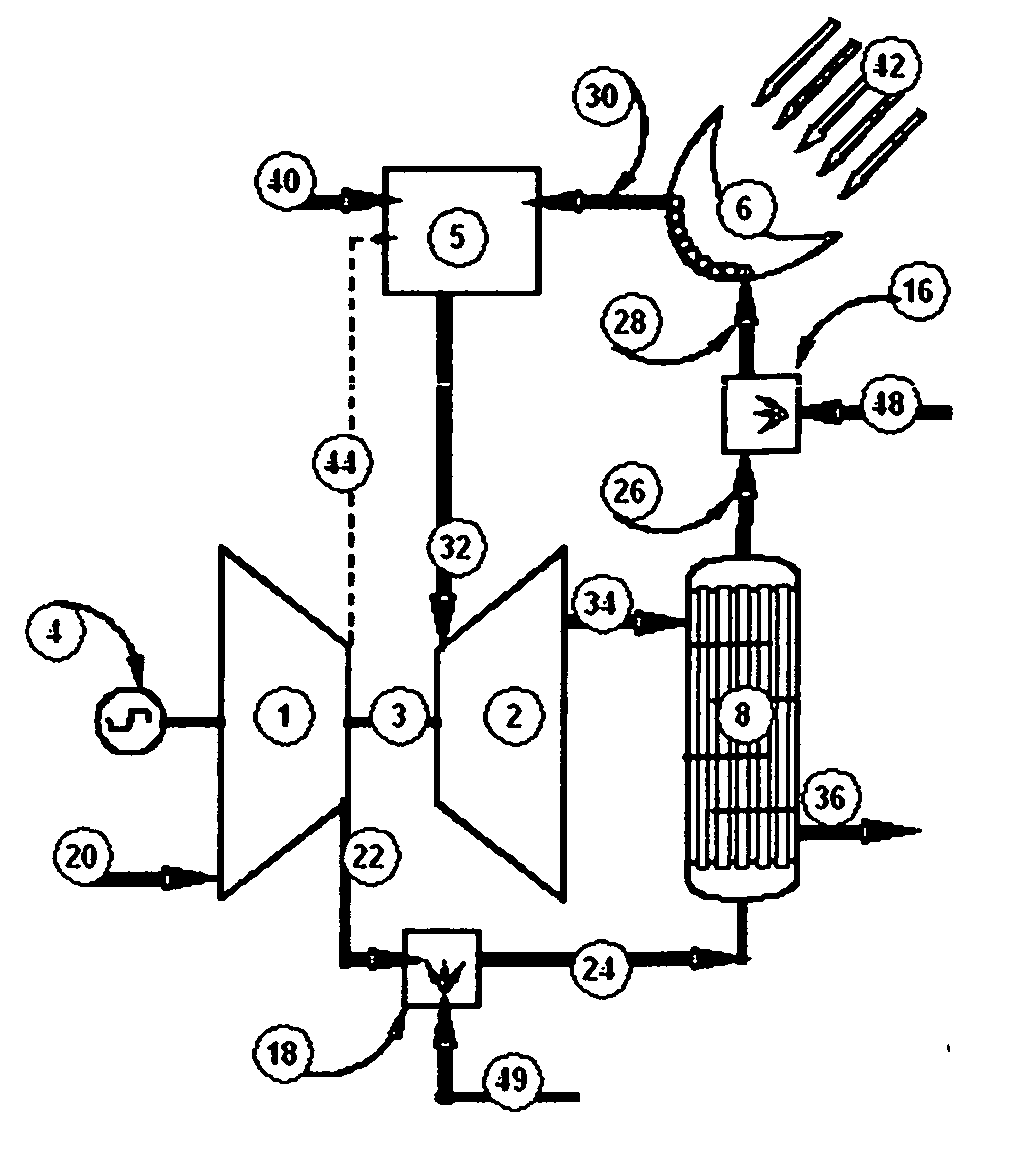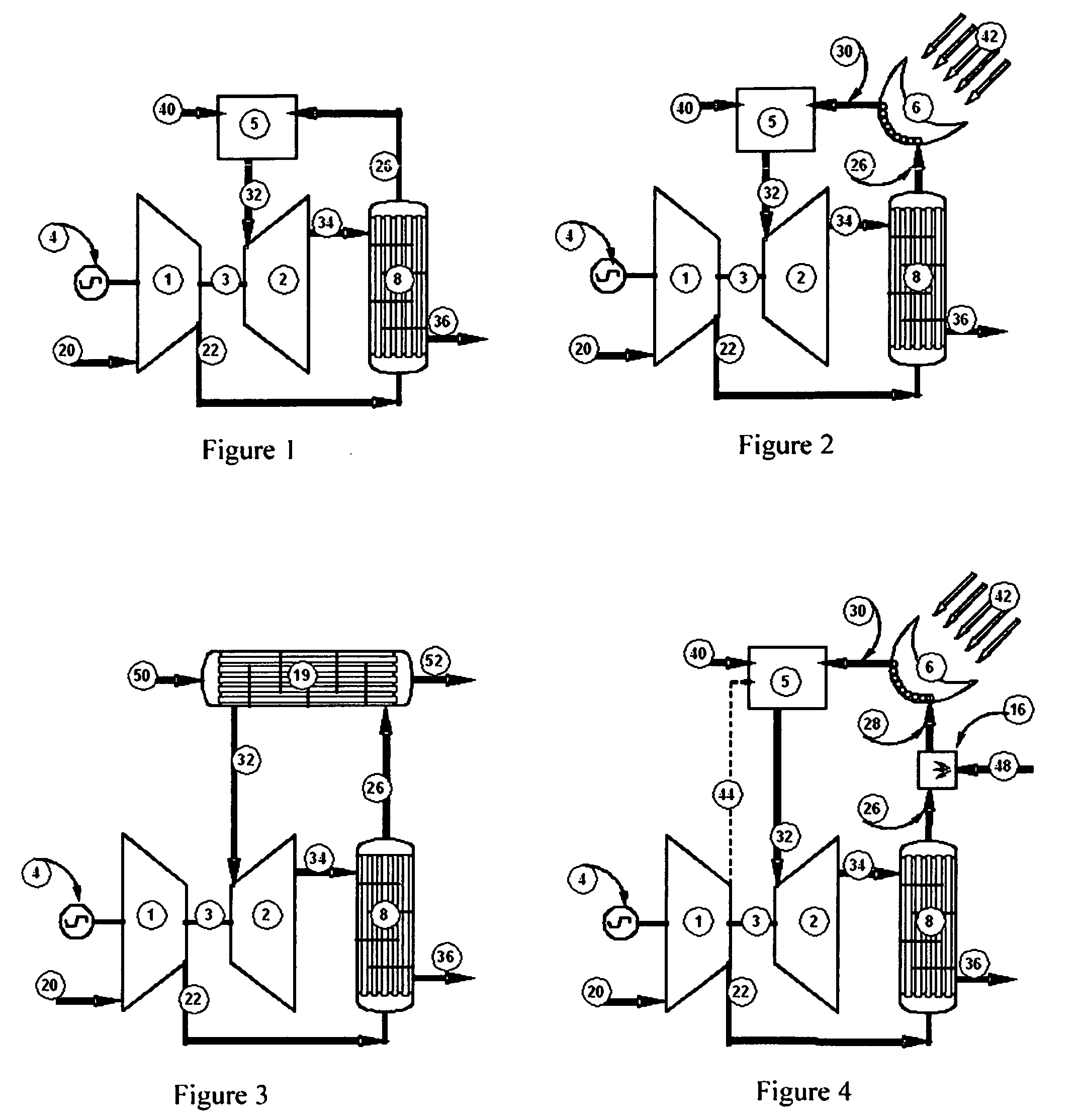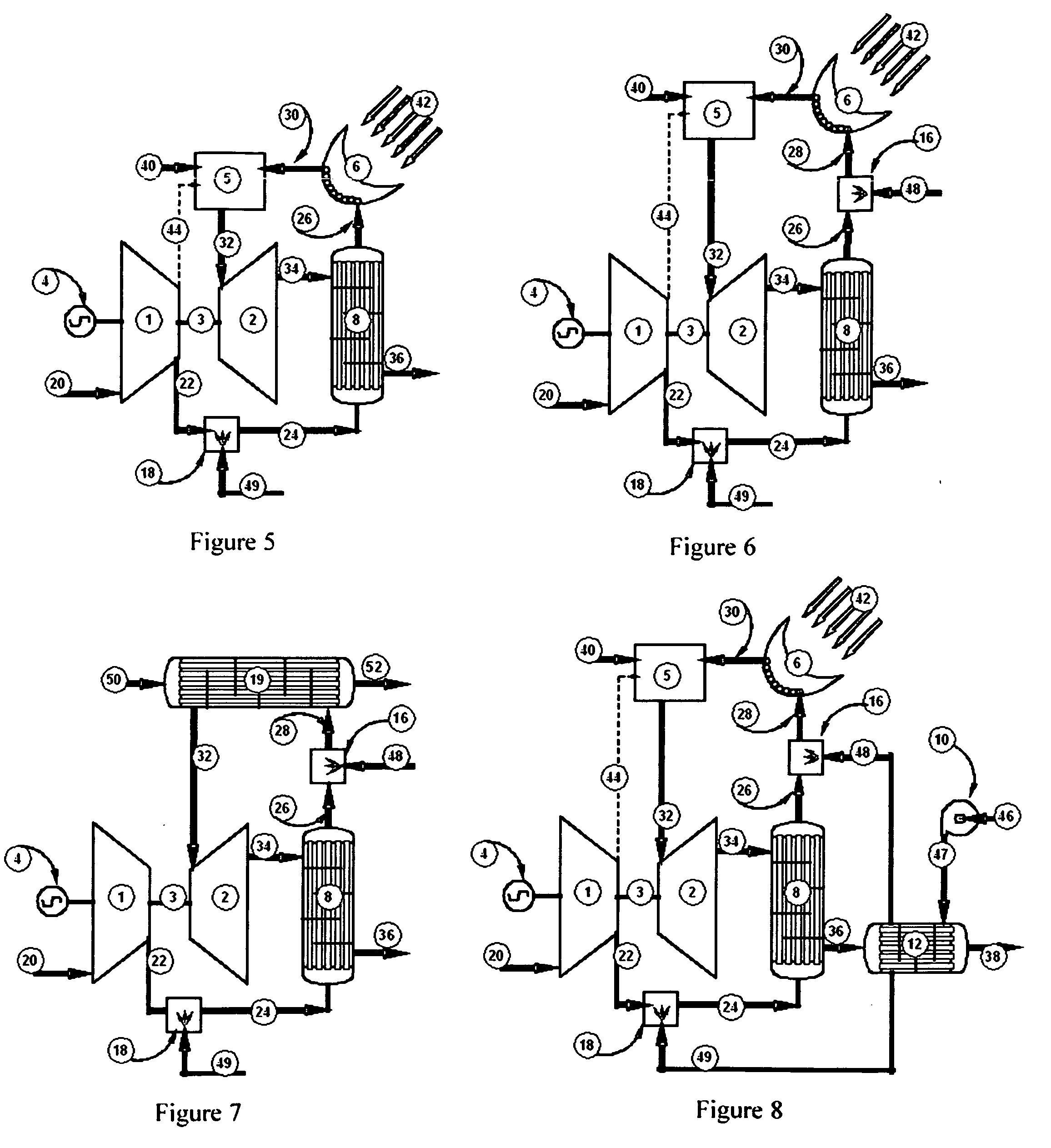Method and apparatus for generating electricity
a technology of electricity generation and apparatus, applied in the direction of electric apparatus, climate sustainability, efficient propulsion technologies, etc., can solve the problems of limiting the usefulness of a microturbine for applications, reducing efficiency rapidly, and difficult to design and maintain the maximum energy input through a solar collector. achieve the effect of increasing the mass of high-pressure working fluid, increasing the temperature and enthalpy of working fluid, and lowering the temperatur
- Summary
- Abstract
- Description
- Claims
- Application Information
AI Technical Summary
Benefits of technology
Problems solved by technology
Method used
Image
Examples
Embodiment Construction
[0040]Thermodynamic analysis of the microturbine shown in FIG. 1 is substantially equal to the thermodynamic analysis of the solar microturbine shown in FIG. 2 which reveals a maximum overall efficiency of 26% and a turndown characteristic shown in FIG. 11. Extension of this graph indicates that a 35% reduction of input energy would reduce the output power to zero. Characteristics of the solar microturbine shown in FIG. 2 will serve as the baseline of comparison for hybrid Brayton modifications taught by this patent disclosure. The following discussions made in comparison to the solar microturbine shown in FIG. 2 will apply equally to effects on the microturbine shown in FIG. 1. Discussions of effects of the hybrid Brayton modifications on the externally heated microturbine shown in FIG. 3 will highlight the implication of the temperature dependent nature of heat transfer in the external heater.
[0041]The hybrid Brayton modification shown in FIG. 4 includes adding water (48) into cha...
PUM
 Login to View More
Login to View More Abstract
Description
Claims
Application Information
 Login to View More
Login to View More - R&D
- Intellectual Property
- Life Sciences
- Materials
- Tech Scout
- Unparalleled Data Quality
- Higher Quality Content
- 60% Fewer Hallucinations
Browse by: Latest US Patents, China's latest patents, Technical Efficacy Thesaurus, Application Domain, Technology Topic, Popular Technical Reports.
© 2025 PatSnap. All rights reserved.Legal|Privacy policy|Modern Slavery Act Transparency Statement|Sitemap|About US| Contact US: help@patsnap.com



